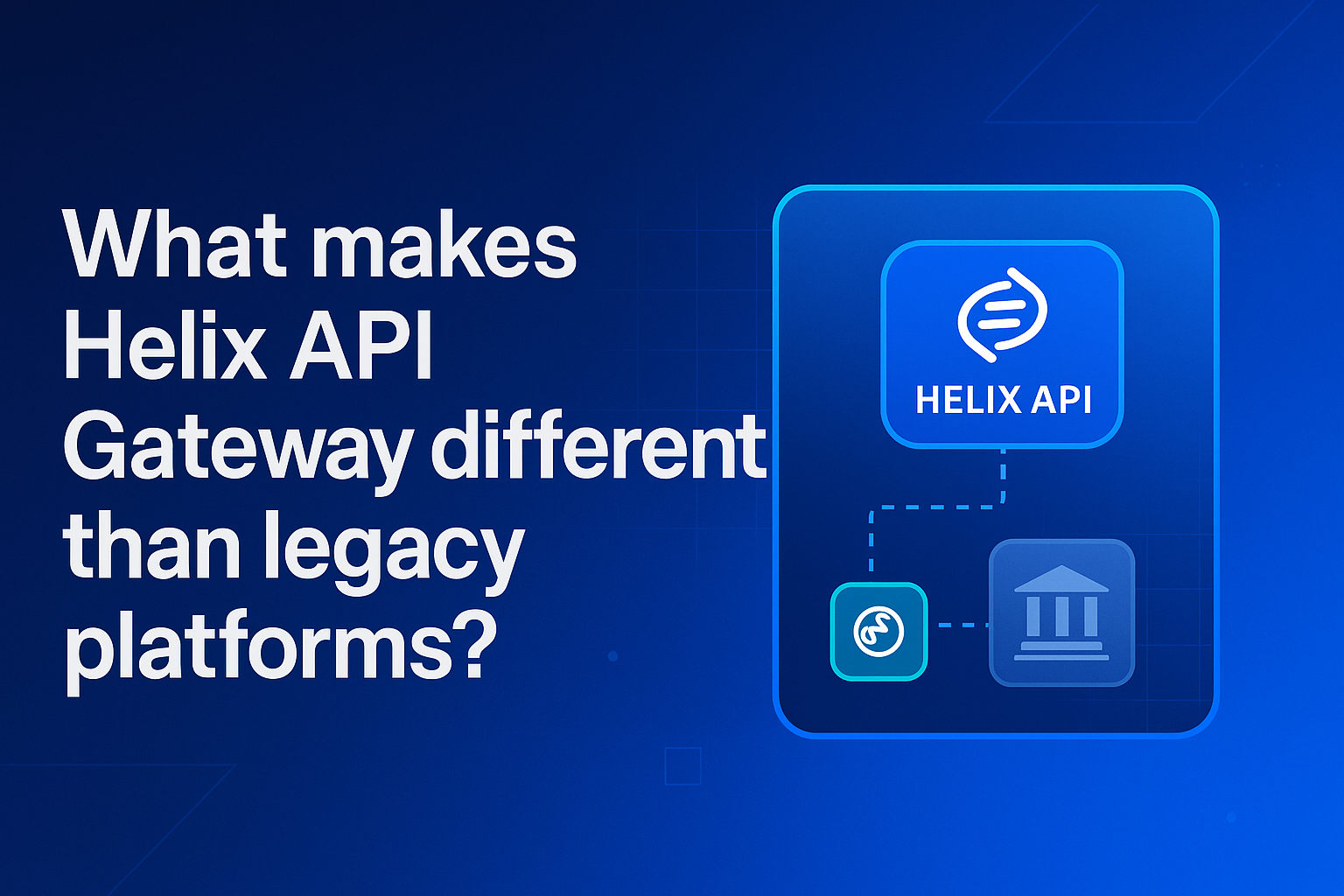Blog
What are the leading API management features for scalable B2B connectivity?
Updated on:

By 2030, the global API management market is expected to reach $29.64 billion at a CAGR of 28%, underlining just how critical scalable, consistent API management has become for organizations expanding their digital ecosystems.
APIs were never just about connecting systems; they were about connecting businesses. But as ecosystems expand, what once worked for a few integrations starts breaking at scale. Every new partner brings its own gateway, security model, and compliance footprint. That’s where most API programs stall: not in design, but in connectivity.
Scalable B2B connectivity isn’t about more endpoints; it’s about consistent identity, governance, and visibility across boundaries you don’t control. In this blog, we’ll unpack the API management features that make that possible, the ones that turn fragmented partner interactions into a predictable, governed network of collaboration.
What does “scalable B2B connectivity” really mean?
“Scalable B2B connectivity” means the ability for an organisation to seamlessly connect, manage, and grow digital relationships with hundreds of external partners, without adding manual effort or integration chaos. In simple terms, it’s how enterprises make their APIs work reliably across different businesses, each with its own systems, gateways, and rules.
In a scalable model, new partners can onboard quickly through self-service, access the right APIs securely, and exchange data through consistent standards, no matter the technology stack. It goes beyond just linking systems; it ensures every connection is secure, governed, and observable at scale.
True scalability in B2B connectivity comes from having a unified API management layer that automates identity, enforces policies, and provides analytics across all integrations. Instead of building one-off connections, enterprises create reusable, governed pathways for every future partner, enabling faster innovation and reducing operational friction.
In short, scalable B2B connectivity is what turns APIs from isolated endpoints into a trusted, repeatable network for business growth.
Core API management features everyone lists (and why they’re necessary but not sufficient)
Most organisations start their API journey with the same set of core API management features. These are essential for any platform to function, but they only solve the operational side of the problem, not the scalability and partner-readiness challenges that define B2B connectivity.
1. Authentication and authorization
Secure access through standards like OAuth 2.0, JWT, and mTLS ensures only verified consumers can call your APIs. It’s the foundation of trust, but it doesn’t help when you need to manage hundreds of external identities across enterprises.
2. Traffic management
Rate limiting, caching, and throttling protect backend systems from overload and ensure reliable performance. However, they don’t account for per-partner SLAs or dynamic routing across multi-gateway environments.
3. API lifecycle management
Version control, deployment automation, and rollback capabilities help teams evolve APIs safely. Yet, lifecycle tools rarely extend to external partner dependencies or contract versioning.
4. Monitoring and analytics
Dashboards for latency, error rates, and throughput are vital for visibility. Still, they mostly track system health, not partner behaviour or usage patterns critical to scaling relationships.
5. Developer portal and documentation
A self-service portal allows internal or external developers to explore and test APIs. But most stop short of providing the frictionless onboarding, contract management, or monetization features that partners expect.
These capabilities are the table stakes of API management; they secure, monitor, and deliver. But when the goal is scalable B2B connectivity, enterprises need to go further: federating identity, automating governance, and enabling multi-gateway visibility.
Top 11 API management features purpose-built for scalable B2B connectivity
Scaling B2B connectivity goes beyond traditional API management. Enterprises need features that simplify how partners onboard, connect, and operate across multiple gateways and compliance boundaries. These capabilities make APIs not just accessible, but governed, observable, and revenue-ready at scale.
- Federated identity and access control: Connect seamlessly with partners’ identity systems through RBAC. This ensures each organization’s users get the right level of access without creating duplicate accounts or manual provisioning. It simplifies trust management while maintaining strong security boundaries.
- Self-serve partner onboarding and contract templates: Allow partners to register, accept legal terms, and request API access directly through an automated workflow. Predefined templates and policy enforcement make onboarding faster, consistent, and auditable, reducing the back-and-forth between teams.
- Multi-gateway federation and unified governance: Unify APIs running on platforms like Apigee, Mulesoft, AWS, or Kong into one control plane. Centralized governance enables policy enforcement, analytics, and visibility across hybrid or multi-cloud environments, without disrupting existing gateway setups.
- Event-driven B2B connectivity: Support asynchronous communication through webhooks and message queues. Built-in retries, dead-letter queues (DLQ), and idempotency keys ensure reliable event delivery, critical for financial transactions and supply chain workflows.
- Legacy-to-API bridges: Convert traditional file-based exchanges into APIs using integration adapters. This allows older systems and partners to connect through modern, secure APIs without re-engineering legacy infrastructure.
- Per-partner SLAs, quotas, and throttling: Define rate limits and quotas at the organizational level, not just per endpoint. This ensures fair usage, predictable performance, and compliance with contractual SLAs for each partner relationship.
- Partner-centric observability and analytics: Enable dashboards that show API performance, latency, and error rates segmented by partner or product. This visibility helps both internal teams and partners troubleshoot issues faster and maintain service quality.
- AI-assisted governance and documentation: Leverage AI to automatically generate documentation, detect API drift, and suggest optimal policies. This reduces manual governance overhead and ensures APIs remain compliant and well-documented as they evolve.
- API monetization and productization: Turn APIs into business products with pricing tiers, billing integrations, and usage-based reporting. This helps enterprises transform connectivity into a revenue-generating channel while maintaining operational transparency.
- Compliance and audit automation: Maintain immutable logs of every change, key rotation, and access request. Automated compliance workflows ensure every integration meets regulatory requirements like GDPR, PSD2, or HIPAA without manual checks.
- AI and agent readiness (MCP and machine-readable APIs): Prepare APIs for AI agent consumption by exposing structured metadata, context, and clear schema definitions. This makes APIs discoverable, explainable, and safe for autonomous systems and LLM-based tools.
.png)
KPIs to measure for scalable B2B connectivity
Scaling B2B connectivity isn’t just about adding partners; it’s about ensuring every connection performs reliably, securely, and profitably. Tracking the right KPIs helps enterprises identify bottlenecks, measure adoption, and prove the business impact of their API programs. Here are the metrics that define a truly scalable and governed B2B ecosystem.
1. Partner onboarding time
Measure how long it takes a new partner to move from registration to their first successful API call. A shorter onboarding time reflects strong automation, clear documentation, and a well-governed developer experience.
2. API adoption rate per partner
Track how many APIs each partner actively uses. A high adoption rate indicates effective discovery and value realization, while stagnation signals usability or documentation issues.
3. SLA compliance and uptime
Monitor uptime, latency, and error rates against promised service levels. Meeting SLAs consistently strengthens partner trust and reduces operational escalations.
4. API monetization and revenue contribution
For organizations productizing APIs, measure revenue per partner, per API product, or per plan. This connects technical performance with direct business outcomes.
5. Spec drift and policy compliance incidents
Count how often live APIs deviate from their OpenAPI specs or fail policy enforcement. Reducing drift ensures reliability and compatibility across integrations.
6. Governance and approval turnaround time
Track how quickly new APIs, versions, or access requests move through governance workflows. Shorter turnaround times without policy violations signal mature, scalable governance.
7. Support tickets and resolution time per partner
A drop in support requests, paired with faster resolution, often means improved observability, clearer documentation, and better self-service onboarding.
8. Event delivery success rate
For event-driven APIs, measure webhook or message delivery success and dead-letter queue retries. Reliable eventing is vital for transactional B2B ecosystems like banking or logistics.
Final Thoughts
Scalable B2B connectivity isn’t achieved by adding more APIs; it’s achieved by connecting the right ones, governed by intelligence and trust. As ecosystems grow, success depends on how seamlessly partners can discover, onboard, and operate within your API landscape. That’s where modern API management evolves from control to collaboration, bringing identity, policy, analytics, and automation together in one unified layer.
DigitalAPI.ai helps enterprises do exactly that, unifying APIs across gateways, simplifying governance, and enabling AI-ready connectivity that scales across partners and geographies.
Explore how DigitalAPI can help you build scalable B2B connectivity! Book a demo today.
FAQs
1. What’s the difference between API management and B2B connectivity?
API management focuses on securing, monitoring, and governing APIs within an organisation. B2B connectivity extends that framework across multiple enterprises, adding partner onboarding, federated identity, contractual SLAs, and compliance layers. It’s not just about managing endpoints but enabling seamless, governed collaboration between businesses through consistent policies, visibility, and trust-driven integration.
2. Which APIM features matter most for B2B?
Key features include federated identity, self-serve onboarding, multi-gateway governance, per-partner SLAs, event-driven communication, and AI-assisted documentation. These ensure scalability, security, and observability across external ecosystems. B2B success depends on APIs being discoverable, governed, and monetizable at an organisational level, not just technically available within one platform.
3. How do AI and LLMs change API management?
AI and LLMs automate documentation, detect policy drift, and suggest optimisation insights in real time. They also enable agentic consumption, allowing intelligent systems to discover, understand, and act on APIs autonomously. This shift transforms APIs from static interfaces into dynamic, machine-readable assets that power contextual, AI-driven business automation and decision-making.
You’ve spent years battling your API problem. Give us 60 minutes to show you the solution.
.svg)











